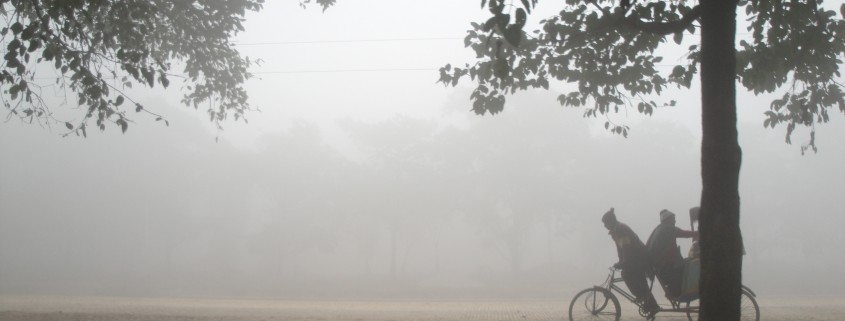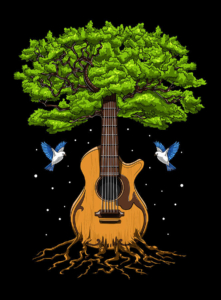Saints, Sadhus, and Kumbh Mela
All over India, the vast majority of citizens place an extremely high priority on devotion. While Hindu is a monotheistic religion, there are many “Gods” or manifestations of God, and they are praised and honored in regular religious festivals throughout the year and fascinating rituals. One of these festivals is Kumbh Mela, which due to its awesome important and massive popularity has made it the largest gatherings of humans on earth. Celebrated over the course of 45 days beginning in January, Kumbh Mela draws many pilgrims to the holy Ganga River. In 2003, 70 million people made the journey.
This year happens to be an important year for the Mela because of the moon’s auspicious alignment. I really wanted to experience this event, and so I decided to fly from sunny south on up to Deli just in time for Shivarati—a festival that coincides with Kumbh Mela.
Leaving Delhi before sunrise, Rosanna and I took a northbound bus headed to Hardiwar (I’m now traveling with lovely Rosanna, who I met in Nepal a few months ago and met up with her in Delhi last night.) Rosanna is great company and that helped make this tumultuous journey in a local bus enjoyable. Two passengers in seats just in front of us spent the majority of the 8-hour bus ride leaning out the window and puking their brains out. We began counting the episodes with amazement that there could be anything left in their systems. Ten puking sessions later we arrived in crazy Haridwar.
Roads were blocked off. Pilgrims were hauling bags and suitcases on their heads, walking every which way. Confusion abounded, gridlock to be expected. We got out of the bus and began searching for another bus to Rishikesh, which is where we planned on being based out of. However, we learned that the whole city was blockaded and that unless we wished to walk 13 miles, we weren’t going anywhere.
Every single hotel and accommodation was way overbooked during this massive festival, but a helpful tourist info dude set us on the road to an ashram that could lodge us for the night. Pretending to be husband and wife (this was necessary), Rosanna and I talked the serious swami proprietor of the ashram into letting us stay there. He seemed skeptical about our marital status, but didn’t question our different last names and that our passports listed home addresses that were opposite sides of the country.
A little before sunset we embarked upon the journey to Hari Ki Pari, the centre of town where the festivities occur, where the Ganga River flows.
Along with millions of devotees and pilgrims who come the Kumbh Mela, it’s also the largest gathering of sadhus, saints, and monks. Walking barefoot around town, many of these sadhus are naked, painted white with ash and wearing sparse jewelry and accessories that make them look like ancient sages who have just emerged from a cave. Orange is the color and everywhere you look you see the saffron garb of monks and spiritual ascetics, carrying their only possessions- beggars bowls and blankets.
Much energy was swirling around. The volume of people was astounding. The road was like two rivers of people flowing in opposite directions. Their were many blockades and Rosanna and I had to hire several rickshaws who would take us another couple hundred of yards, before quitting at the next blockade. Eventually we arrived at the Ganga.
Loud Hindi devotional music was blasting out of megaphone speakers. Many lights were strung across the bridges and everywhere, reminding me of the lawn-art scenes you see around Christmas, like millions of candles illuminating the amazing spectacle. Great joy filled my heart as we walked around with open eyes taking it all in.
The monks and sadhus stay in camps located around Haridwar. The following morning, Rosanna and I were exploring the camps when one extraordinarily little man arrived to be our guide. With a waving of a hand he encouraged us to follow him. We passed through a little doorway and arrived in a sadhu camp with many tarps stretched across wooden frames, forming up several communal “living room” spaces. In each one is a group of babas, saints and naked sadhus, surrounded by devotees. We were invited to join them and so we took a seat. Speaking in elementary broken English we were able to communicate a little, and where words failed we shared in laughter.
Rosanna and I were intrigued by the Mela because we had heard that it’s an opportunity to discuss with monks and saints the finer points and philosophy of their faith, exchange ideas, and learn the sacred traditions of this varied community of holy aspirants. Having spent some time with these guys, I really don’t know how much philosophizing/ praying actually happens here. All I do know is that they smoke prodigious quantities of hash and marijuana.
They smoke out of a chillum, which is a hollow graduated cylinder that gets filled with a combination of hash and tobacco. And as soon as they finish one chillum, taking massive hits and exhaling thick clouds of smoke, they begin preparing another, which involves a curious ritual of rolling the tobacco and hash together in their hand. Neither Rosanna or I smoke, and refused when offered, which fortunately didn’t seem to bother the babas.
After hanging out with the babas for the better part of the afternoon, Rosanna and I concluded that hanging with the babas was a lot like hanging out with some of our hippie friends, and were kind of bored.
Leaving the camps, we headed on down to the river. It was there that I took my first dip in the Ganga. A sacred bath it was. When I emerged from that frigid green water I felt fully alive and completely grateful for the gift of life. The Hindus are fanatical about the Ganga and speak endlessly of its sacred power and healing properties. I was skeptical about this, but after taking a dip I am now a believer. It was amazing! The Indians were elated to see western me strip down into my underwear (this is what all the Indian men wear when they swim, so I followed suit) and bathe in the Ganga.
At sunset we attended the riverside puja. Puja is a religious ceremony of gratitude to God. During the Kumbh Mela this puja is incredibly popular. The whole area was packed to maximum density hours in advance of the ceremony- it was impossible to move. Rosanna and I had secured a great place, but then at the last minute we were booted and had to go elsewhere. In a vast ocean of people all we could see were the backs of peoples’ heads. For a moment I was disheartened, but then we spied a ladder and monkeyed up it just in time to witness the Brahmin priests wielding fire and offerings.




Leave a Reply
Want to join the discussion?Feel free to contribute!